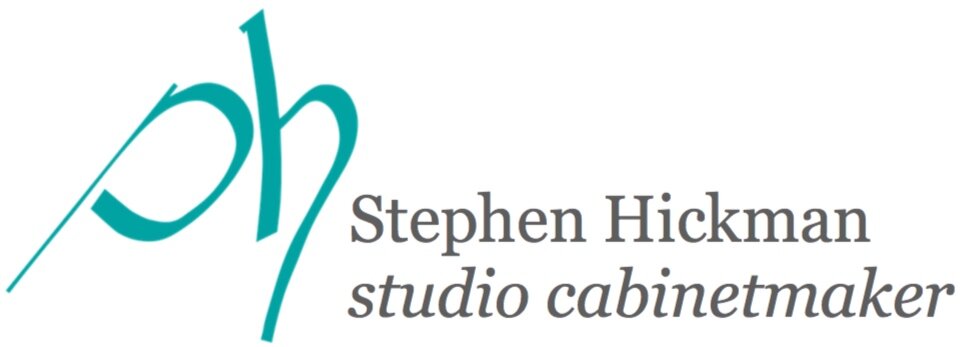No, veneer in 'ere
For readers who don’t recognise it, the title is playing with a well-known advertising slogan from furniture retailer who offers only hardwood furniture. “No veneer in ‘ere”, is the claim, as they knock the wood. Of course, I love solid wood furniture, but this article is about flying a flag for veneer.
Veneering has gotten a bad rap throughout history, frequently being seen as a cheap substitute for 'real wood'. The pros and cons of veneer is worthy of a separate article. For now, however, it is sufficient to say that in the hands of a cabinetmaker, veneer is used in a much more considered way than just making a product ‘on the cheap’. So come in ‘ere, and learn about veneer.
The Bistro Table
The small bistro table is perhaps my favourite piece of furniture, since one can be equally comfortable sitting at it alone or in company. As one who is perhaps best described as a 'sociable introvert', I have spent a significant amount of time in my life doing both.
I wanted to use this project to push the simple bistro-table into the world of fine furniture. As with the cabinet, my vision was for a perfectly proportioned design with a beguiling simplicity. I sought a look that from the outset seemed simple, but upon closer examination had layers of complexity.
Design
For such a small round table, it sits best on a pedestal. Look at the tables in your local coffee shop and you will see this is usually accomplished simply by a central column supported on a circular base. I wanted to give this one legs, but with an organic feel: an elegant curve, with a natural feeling of movement and growth.
I spent a lot of time was spent in a sketchbook, first of all drawing flowers and organic forms, and then exploring various designs. I settled on a fibonacci-style spiral: a seashell-like curve that widened as it traveled up towards the surface. There was no way this could be cut from solid wood.
The underframe is shaped by clamping and gluing in a forma.
Underframe
Wood only has strength along the grain. This means that when the wood is cut in a curve, the grain starts to go across the piece, and can easily snap. When looking for rigidity in curved pieces, we can use a technique called laminating. Laminating involves gluing many thin slices of 'constructional veneer' together. These are bent around a ‘forma’ to form a shape otherwise unattainable in solid wood. The forma must be constructed with precision, as any gaps will mean that pressure is not applied correctly, and glue-lines will be visible.
Once glued with surfaces planed, I added a string-line. String-lines provide high and low-lights in a piece, and visually connect two elements in the table. In this case, a dark string-line connected the bright underframe with the dark top.
Finally, the legs were secured together. I used a block plane to add a 60º triangular joint to the back of each leg, with a strong epoxy resin providing the adhesive to join them together. Fixed to a smaller 'sub-top', this completes the under-frame, ready for the top.
Top
While the under-frame was all about the form, the shape of the table top was to be very simple - a circle with a bevel on the edge. The complexity here was in the veneered surface..
The lay-up (pattern) I chose to do was a 'sunburst' in Indian rosewood*. This is a stunning effect where a straight-grain radiates from a central point. The first job is to make a triangular template out of a stable wood such as quarter-sawn maple. This is hand-planed dead straight on every side, at exactly 15 degrees, and used to cut out precise triangles of veneer. I used a flat-backed veneer saw and a Japanese knife with a super-sharp blade to get each point of veneer even and sharp, so the central point can be formed precisely. A precision point in the centre is the hallmark of a high-quality veneered sunburst.
To frame the sunburst, a border of solid rosewood was added and bevelled. Finally, (most terrifying of all) the last job was to take a router to the almost finished table and cut a groove for a stringline in the tabletop. One little slip at this stage could spell disaster...I had lots of practice goes beforehand!!
Conclusion
To accompany the bistro table I made two chairs. Some techniques were similar (curved legs, for example), and some were new. But this article has gone on long enough. Chair-making deserves its own article another day.
Although I love to use a whole range of traditional techniques in solid wood, having an arsenal of more modern techniques is vital. Working in solid wood is wonderful but comes with its own set of limitations. In the hands of a cabinetmaker, using veneer in different ways can drastically increase the construction possibilities, which can lead to designs where the only limitation is your own creativity. And that is exciting!
-sh






